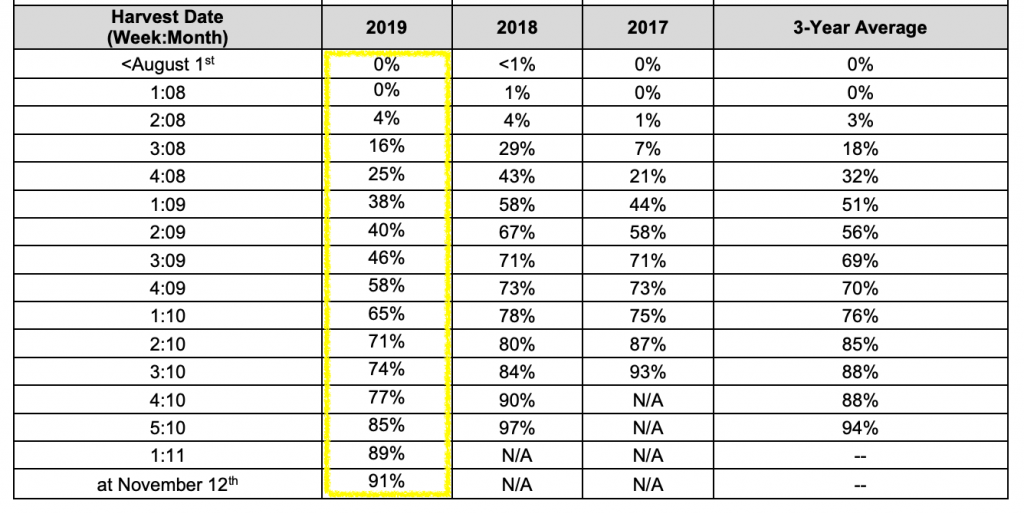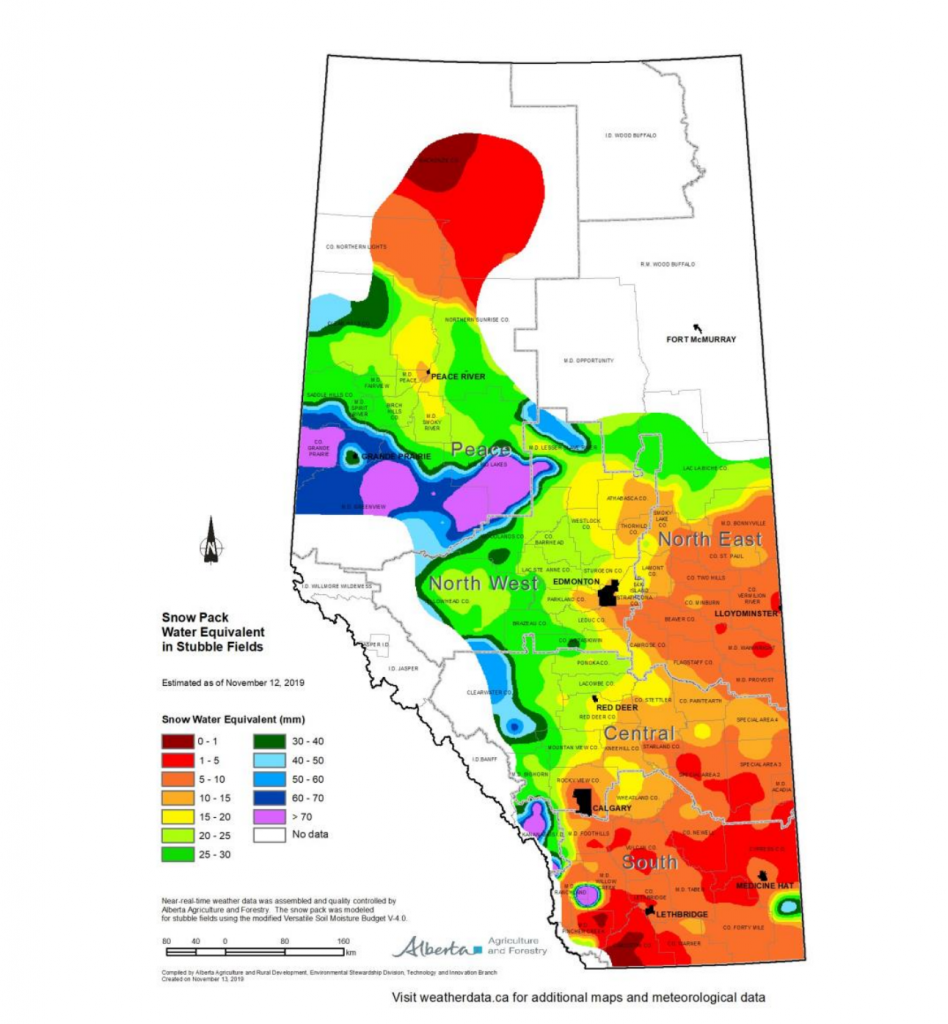
News
Harvesting
‘Harvest from hell’ ongoing, progress in the Prairies lags behind
Highlights from the latest crop reports from Alberta, Saskatchewan and Manitoba.
November 20, 2019 By Top Crop Manager
Snow, rain, drought, wind, hail – you name it, and the Prairies have seen it this year. Team Alberta has dubbed the poor harvest conditions experienced in the province as the “harvest from hell.”
According to the latest Alberta crop report, this year’s wet conditions have resulted in 11 per cent of the crop still left in the fields, but 17.3 per cent of the canola crop, nearly 15 per cent of the potato crop and 45 per cent of the sugar beet crop. Unharvested acres represent a total value of more than $778 million across the province.
Conditions are most critical in the Peace Region where 40 per cent of the crop is unharvested with other pockets in the Peace and several areas along the Highway 2 corridor where less than half of the harvest is complete. The 2019 growing season marks the third year of drought in southern Alberta and excessive moisture in northern Alberta.
This news follows stories earlier in October that showed Alberta’s harvest faced the largest delays when compared to Saskatchewan and Manitoba. However, harvest has been tough everywhere and some crops will remain in the field to overwinter. In Manitoba, a long weekend snow storm blanketed the region, causing its 2019 harvest to be delayed beyond was seen in the previous two years.
Alberta
- Provincial harvest progress remained unchanged from a week ago (November 5) at 89 per cent for all crops in the bin, compared to 81 per cent at this time in 2016, another difficult harvest year.
- Regionally, about three per cent of all crops in the Southern Region, eight per cent in the Central, 13 per cent in the North East, seven per cent in the North West and 35 per cent in the Peace remain unharvested.
- As of November 12, more snowfall over the past week practically brought harvest to a halt, with a marginal harvest progressing up 0.2 per cent for all crops across the province.
- Forecast for the rest of November for some areas suggest some warming temperatures which will encourage snow melt, but it is unlikely to significantly advance any harvest progress, as the fields are already wet.
- A map, depicting snow pack water equivalent in stubble fields, suggests that there is a five to 20 mm of snow pack water equivalent in the Southern Region, the eastern half of the Central Region as well as the southern, central and eastern parts of the North East Region.
- More specifically, in the western parts of the Central Region, the North West Region and the northern parts of the North East Region, snow pack water equivalent is estimated at 20 mm and increasing up to 50 mm towards the west.
- Considering the amount of snow in the fields, and especially, in the Peace Region, which is the most behind, it would be unlikely that producers can finish harvest before next spring.
A full regional breakdown is available in Alberta’s latest crop report.
Saskatchewan
- Despite the challenging and difficult harvest, Saskatchewan producers now have 93 per cent of the crop combined.
- Harvest operations may continue in parts of the province as weather and field conditions permit.
- Producers are hopeful that much of the remaining crop will be able to be taken off prior to winter, although there are indications that some of the crop will likely be left out until the spring.
- Any crop harvested now is being taken tough or damp. Aeration and drying operations continue on many farms as they have for most of harvest.
- The east-central region has the most crop remaining in the field with 83 per cent combined. The southeast and northwest regions have 94 per cent of the crop combined; the southwest and west-central regions 97 per cent; and, the northeast region has 98 per cent combined.
- Crop yields vary greatly across the province, mainly due to the extremely dry conditions this spring and summer as well as moisture received throughout the growing season.
- Many areas have reported average to above average yields. Yields for hard red spring wheat are reported as 45 bushels per acre, durum as 39 bushels per acre, oats as 88 bushels per acre, barley as 66 bushels per acre, canola as 38 bushels per acre, peas as 38 bushels per acre and lentils 1,392 pounds per acre.
- Quality is below average for almost all crops due to varying factors such as sprouting, staining and bleaching. Crops harvested early on fared better for quality.
A full regional breakdown is available in Saskatchewan’s latest crop report.
Manitoba
- Manitoba Agriculture released its 2019 provincial summary on Nov. 12, 2019, wrapping up the 2019 season.
- Overall harvest across the province is 91 per cent complete as of Nov. 12, with grain corn, sunflower, and dry bean harvest lagging the most behind at 47, 51 and 73 per cent complete.
- Seeding progress began earlier than normal in late April, and quick progress followed in May with 94 per cent of main field crops seeded by the fourth week of May.
- Dry conditions persisted throughout most of the province until early September.
- Crop yields for spring cereals and canola are average in many areas; however, lower yields were reported for soybeans and some corn due to dry conditions during pod/cob filling.
- Low disease pressure resulted in good crop quality for early harvested grains; while wet fall weather has seen harvest quality decline for late harvested canola and cereals.
- Harvest in Manitoba has been slow, and challenging fall conditions have limited progress each week.
- Harvest of cereal crops and field peas is essentially complete. Canola and flax harvest is close to complete but some crops will remain in fields overwinter, and soybean, grain corn and sunflower harvest is ongoing.
- Fall field work including tillage, soil testing, post-harvest weed control, and fertilizer applications of anhydrous ammonia have been reduced from previous years due to wet fields and ongoing harvest.

Harvest 2019 progress is behind the province’s three-year average, and a couple points behind where it was last year. Photo courtesy of Manitoba Agriculture.
A full regional breakdown is available in Manitoba’s latest crop report.
